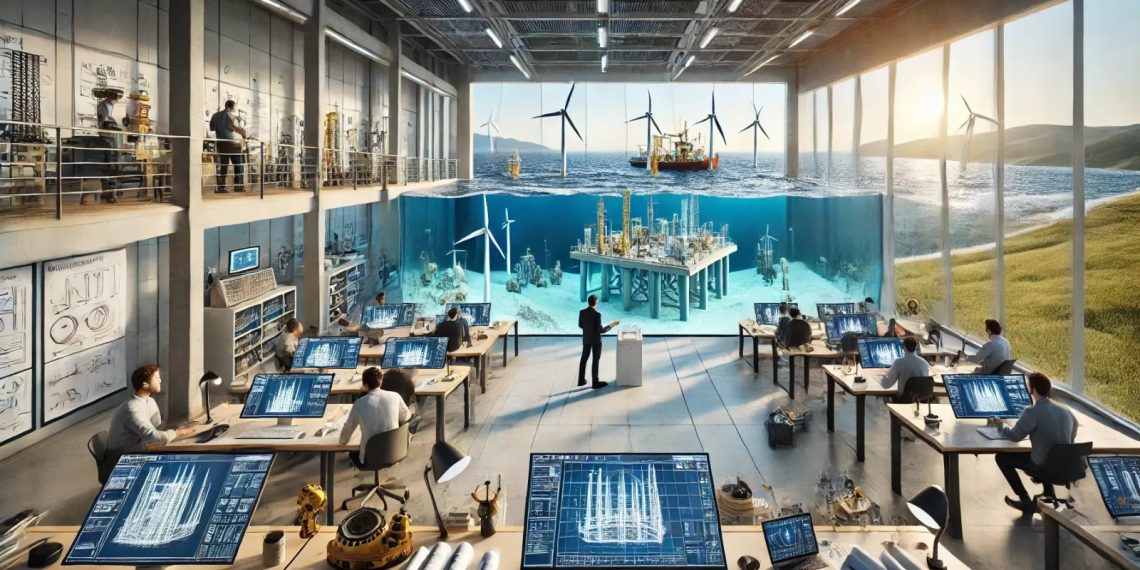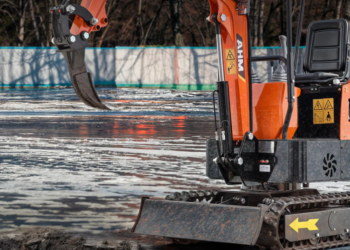If you are planning your career in the construction industry, you have certainly come across the field of marine construction. It is the branch of the construction sector responsible for all projects and realisations of marine buildings and installations. This branch of construction has become increasingly important in recent years. And for good reason.
Lakes, rivers, seas and oceans have always been developed by humans. This is how maritime construction came into being. You can gain a professional qualification in this sector by studying various courses at maritime and technical universities. In this article, we will give you a detailed answer to the title question: What is civil engineering, and what is its future in the world? We invite you to read on.
What is civil engineering?
Definition and characteristics of maritime construction
Maritime construction is an advanced branch of engineering that focuses on the design, construction and maintenance of structures in offshore areas. However, the construction of these structures is relatively different from those of civil engineering since they are built amidst water. Wind, wave and current loads are dynamic hydrodynamic loads that should not be ignored by marine civil engineers while developing structures.
Of course, the marine structure involves the use of corrosion and erosion-resistant materials that are crucial when it comes to the durability of the structures. Of course, there are significant difficulties in the severe organizational environment that can add more problems:
Transporting the structures:
- Components often transported by sea.
- Requires precise planning and coordination.
- Scope of projects:
- Breakwaters and quays.
- Off-shore platforms.
- Advanced energy installations.
Undoubtedly, the specific nature of these projects necessitates the use of innovative technologies and construction methods:
Anchoring and foundation systems:
- Ensure stability in extreme conditions.
Geotechnical surveys of the seabed:
- Adaptation of projects to local soil and hydrological conditions.
The importance of marine construction in today’s world
Maritime construction plays an irreplaceable role in the global economy, supporting key industry sectors:
- Maritime transport:
- The foundation of international trade.
- Requires a developed port infrastructure.
- Handling millions of tonnes of goods annually.
- Renewable energy:
- Offshore wind farms.
- Tidal and wave installations.
- Reduction of greenhouse gas emissions.
- Increasing energy independence.
- Extractive industries:
- Oil and gas exploitation.
- Design of offshore platforms.
- Minimising the risk of failure.
Undeniably, the development of these sectors requires advanced off-shore structures that must be efficient and able to withstand harsh marine conditions. Off-shore infrastructure is evolving to handle ever larger vessels and to integrate modern technology into port operations.
In addition, marine construction contributes to coastal protection through:
Building breakwaters:
- Preventing coastal erosion.
- Protecting infrastructure from extreme weather events.
Modern breakwaters and dikes construction are being developed to deal with problems of coastal erosion and safeguard various structures during hurricanes.
Existing buildings require improvement of foundations or redesign of drains if any in an effort to make them safe for use. It is ideal in making structures have the capacity of withstanding fluctuations in hydrological and meteorological conditions.
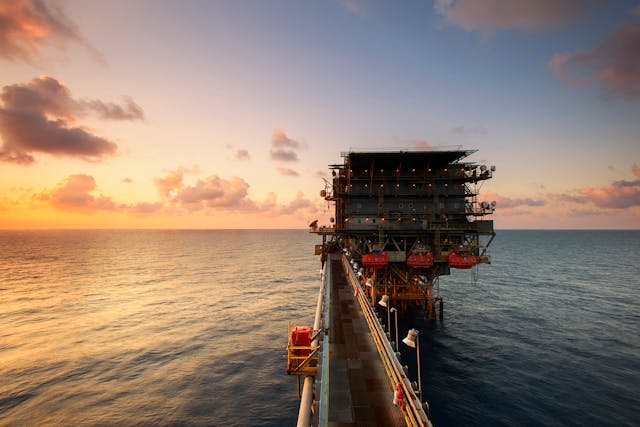
Areas and types of projects in maritime construction
Port and coastal infrastructure
The construction and modernisation of ports, harbours, cargo and passenger terminals is the cornerstone of global maritime trade. Marine civil engineers undertake the following tasks:
- Design of new ports:
- Analysis of local hydrological and geotechnical conditions.
- Selection of the optimal location taking into account the availability of sea routes.
- Integration of modern maritime traffic management systems.
- Modernisation of existing ports:
- Reinforcement of quays by using advanced marine concretes.
- Installation of automated loading and unloading systems.
- Improvement of transport infrastructure within the port.
- Construction of cargo and passenger terminals:
- Implementation of container storage technologies such as automated racking.
- Ensuring safe operations through advanced monitoring systems.
- Designing passenger spaces for comfortable passenger flow.
Coastal structures, such as breakwaters, quays, dikes and piers, play a key role in protecting maritime infrastructure and coastlines. Here are their main types and functions:
Breakwaters:
- Absorption of wave energy, which reduces the force of impacts on quays.
- Protection against coastal erosion and minimising land loss.
- Constructions made of concrete, stone or composite materials.
Wharves:
- Enable safe mooring of ships and transport of goods.
- Designed to take into account hydrodynamic loads and dynamic environmental conditions.
- Using steel frames, reinforced concrete and innovative composite materials.
Flood barriers:
- Protect the harbour area from flooding during storms and high tides.
- Integrated rainwater drainage systems.
- Constructed from salt water and erosion-resistant materials.
Piers:
- Enable safe mooring of watercraft.
- Reduced risk of collisions and damage to vessels.
- Floating or fixed structures, adapted to the specifics of the port.
Off-shore facilities
Off-shore facilities are advanced structures located on the open sea, mainly used in the energy and mining sectors. The main types of off-shore facilities include:
- Drilling platforms:
- Oil and gas exploration: Design of stable structures capable of supporting themselves in deep water.
- Safety systems: Implementation of advanced firefighting and rescue systems.
- Foundations: Use of technologies such as monopiles, jackets and floating foundations.
- Offshore wind farms and other renewable energy facilities:
- Floating wind turbines: Designing stabilisation systems that maintain an optimal angle of attack relative to the wind.
- Solar panels on water: Corrosion and mechanical damage protection, integration with energy storage systems.
- Tidal and wave installations: Use of wave energy to generate electricity, design of marine-resistant structures.
- Structures related to the extraction of raw materials from beneath the seabed:
- Metal ore mining: Designing transportation and storage systems that minimise impact on the marine environment.
- Foundation: Use of specialised foundations to ensure the stability of structures on an unstable seabed.
- Transportation systems: Design of pipelines and subsea systems to transport raw materials to land.
Hydraulic engineering
Hydrotechnical construction in the context of marine construction encompasses a wide range of projects that aim to manage water resources and protect coastlines. Key areas include:
- Retention reservoirs, marine channels, locks and coastal dams:
Retention reservoirs:
- Storage of rainwater and control of marine water flow.
- Design taking into account local hydrological conditions.
Sea channels:
- Enabling safe passage of vessels.
- Controlling the speed and direction of water flow to minimise erosion and sedimentation.
Locks:
- Regulating water levels, allowing vessels to pass between different water levels.
- Design of pressure and flow control systems to ensure safe passage.
Coastal dams:
- Protecting land areas from excessive flooding.
- Stabilising sea levels and minimising the effects of flooding.
- Projects to protect coastlines from erosion:
Breakwaters and dikes:
- Absorption structures that protect coastlines from wave power.
- Use of durable seawater-resistant materials.
Shore stabilisation:
- Design of vegetation and structural systems that prevent land erosion.
- Implementation of modern construction technologies that increase the resilience of shorelines.
Integration with harbour infrastructure:
- Ensuring that protective structures coexist harmoniously with port infrastructure.
- Minimising the impact of protective structures on the operation of ports and surrounding areas.
The maritime construction is one of the specialties that is based on engineering and the detailed working on the construction of different types of facilities. The marine civil engineers therefore play important role of having to update themselves and to broker in new technology to preserve the escalating market demand and environmental concerns. In this regard, marine construction is identified as one of the world’s significant construction sectors that contributes into construction of infrastructure and provides support for sustainable development and environmental conservation in the marine regions.
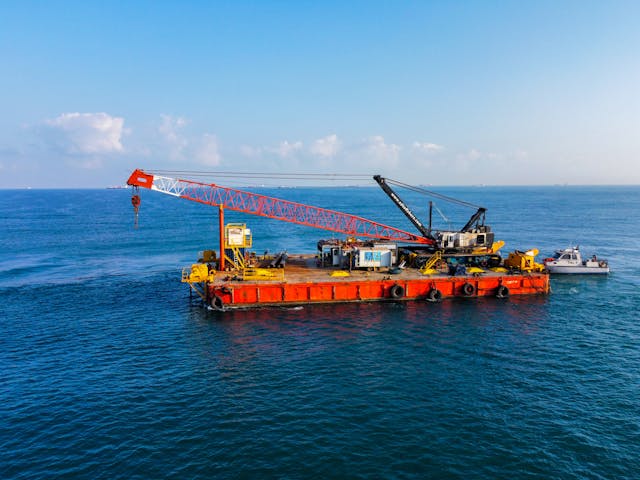
Design and execution aspects
Engineering-geological analysis of the seabed
Offshore construction requires a thorough geological-engineering analysis of the seabed. Here are the key elements of this process:
- Geotechnical investigations:
- Soundings: Allow the identification of soil layers and the assessment of their bearing capacity. They allow engineers to determine which foundations will be most effective.
- Bathymetric surveys: Accurate mapping of sea water depths enables the creation of accurate models of the seabed terrain. This is essential for the optimal placement of structures.
- Soil composition analysis: Chemical and physical studies of the marine soil allow the selection of appropriate foundation materials and technologies.
- Matching foundation design to local conditions:
- Soil consistency: Engineers must take into account the type and strength of the soil to make the foundations stable and durable.
- Water depth: Depending on the depth, different types of foundations are used, such as monopiles, jacket or floating foundations.
- Settlement dynamics: Analysing the potential settlement of structures under the influence of waves and currents is key to ensuring their longevity.
Design of offshore structures
Designing offshore structures is a process that requires advanced technology and precise calculations. Here are the most important aspects:
Numerical modelling:
- Analysis of dynamic loads: Simulations of the effects of waves, currents and wind on structures allow designs to be optimised for durability.
- CFD (Computational Fluid Dynamics) simulations: Advanced fluid flow models help to identify the most stressed areas and optimise the shape of structures
Taking climate change into account in long-term designs:
- Adaptation to sea level rise: Future changes in the structures must be made with consideration to the increase of the sea level in the future in order to favor adaptation.
- Resistance to extreme weather events: During natural disasters such as hurricanes, tsunamis and the likes, structures should be able to endure them.
- Sustainable engineering solutions: The use of environmentally friendly technologies applies reductions on effects that harm aquatic life.
Logistics and project management
Effective logistics and project management are key to delivering complex marine construction projects:
- Material transport and procurement:
- Specialised vessels: The use of jack-ups and installation vessels ensures the safe transport and installation of large structural components.
- Prefabricated modules: Producing components on land and transporting them by sea reduces project lead times and minimises the risk of construction errors.
- Delivery coordination: Precise planning of transport schedules enables assembly work to run smoothly, even in difficult weather conditions.
- Schedules and risk of delays:
- Time planning: The creation of detailed schedules takes into account all stages of the project, from geotechnical investigations to final installation.
- Risk management: Identifying potential risks, such as adverse weather conditions, allows strategies to be developed to minimise their impact on the schedule.
- Adaptation to changing conditions: A flexible approach to project management enables rapid response to unexpected situations and changes in the work plan.
Several design and execution considerations are unique in marine constructions, which emphasizes on an engineer’s technical and problem solving prowess when it comes to handling these projects. That is why it is rather important for the development of the global infrastructure as it represents accurate geological-engineering investigation, numerical modelling at the highest level and logistics management. It is important for the engineers to update themselves from time to time because of the ever changing market demand and condition. That is why, the construction in and related to the marine industry is beneficial and safe for the world’s development and the marine environment as it guarantees the durability of the constructions.
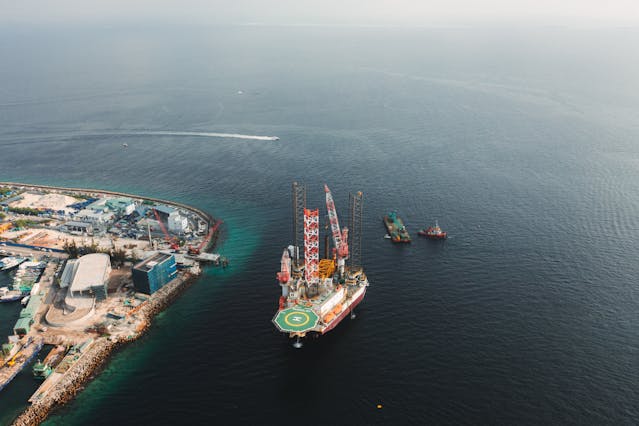
Developments in the maritime construction industry
New technologies and innovations
Maritime construction is developing dynamically through the implementation of modern technologies and innovative solutions. Here are the most important directions of this development:
- Floating wind farms, wave and tidal offshore turbines, harnessing ocean thermal energy:
- Floating wind farms allow turbines to be installed in deeper waters where the wind is stronger and more stable. This increases the efficiency of renewable energy production.
- Offshore wave and tidal turbines convert the energy of wave motion and currents into electricity. Such solutions diversify energy sources, helping to reduce greenhouse gas emissions.
- Ocean thermal energy involves extracting heat from deep layers of water. This technology supports the energy independence of coastal regions, increasing their energy stability.
- Industry 4.0 solutions:
- Drones support the inspection of offshore structures, allowing quick access to hard-to-reach areas. They increase the precision of maintenance activities and minimise risks to workers.
- Underwater robots are therefore used to work on the seabed as they engage in maintenance as well as repair services. A use of these tools enhances the performance of operations while less work is required to be done by hand especially in complex circumstances.
- Deciding to select the application of Digital twins, one can create exact replicas of the offshore structures. By using them, engineers can introduce certain realistic methods of operation, identify possible issues to occur and modify existing designs if any.
The impact of climate change on marine construction
Climate change introduces new challenges for marine construction that require adaptation and innovative solutions:
- Coastal protection and adaptation of structures to rising sea levels:
- Modern breakwaters and dikes construction are being developed to deal with problems of coastal erosion and safeguard various structures during hurricanes.
- Existing buildings require improvement of foundations or redesign of drains if any in an effort to make them safe for use. It is ideal in making structures have the capacity of withstanding fluctuations in hydrological and meteorological conditions.
- Offshore energy storage projects:
- Floating hydrogen storage facilities provide an innovative solution for the efficient storage of renewable energy. They enable a stable energy supply, even during periods of low production.
- The integration of energy storage systems with offshore wind farms and wave installations allows for better management of energy resources, increasing the energy independence of coastal regions.
Economic potential and importance of offshore investments
Investment in offshore construction opens up a wide range of economic opportunities, supporting the development of various industry sectors:
- The development of renewable energy and water management:
- Offshore wind farms significantly increase the share of renewable energy sources in the global energy mix. They help to meet climate targets by contributing to the reduction of greenhouse gas emissions.
- Water management includes not only energy, but also maritime transport, fisheries and tourism. All these sectors generate a wide range of investment opportunities and support the sustainable development of coastal regions.
- Job creation and transport infrastructure development:
- Maritime investments create thousands of new jobs in the engineering, logistics and operational sectors. They contribute to economic growth and improved living standards in coastal regions.
- The development of port infrastructure improves international trade, increasing port capacity and the efficiency of transporting goods on a global scale. Modern logistics technologies, such as automation and digitisation of processes, increase the competitiveness and flexibility of the transport sector.
Industry trends in maritime construction point to the growing importance of technological innovation, climate change adaptation and the huge economic potential of maritime investment. Engineers need to continually expand their knowledge and implement modern solutions to meet rapidly changing market demands and environmental challenges. As a result, marine construction plays a key role in global infrastructure development, supporting sustainable development and the protection of the marine environment.
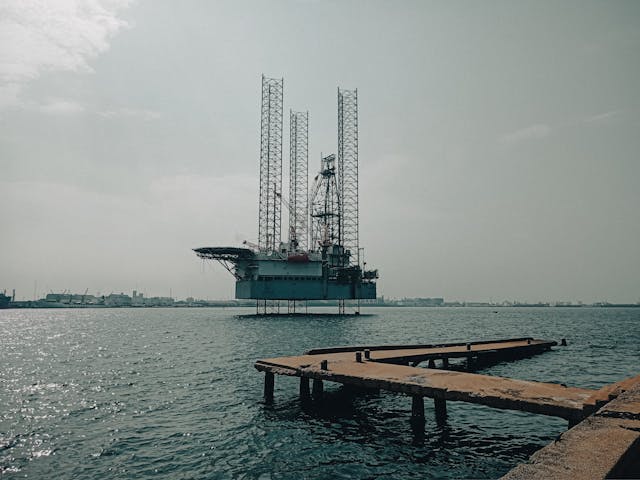
A summary of what marine construction is
If you are planning a career in construction then definitely marine and water construction is the way to go. The sector is booming and there are many indications that this will continue to be the case in the coming years. Therefore, it is certainly worth taking an interest in, as it will play an increasingly important role in the lives of us all. Modern technology and universities have opened many doors to innovation in maritime construction. Will it be the same in the coming years? It would seem so, but time will tell.
Are you interested in this article? You will find more publications at https://www.cpcs-training-courses.co.uk/

